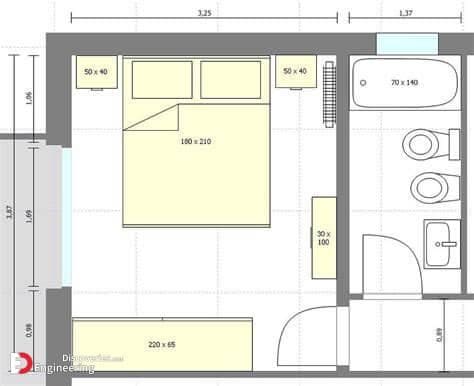
We cover a lot of information about furniture on this site; mostly indoor furniture, but gear for outdoors as well. Much of the outdoor furniture is made from wicker and/or rattan, and some indoor stuff is as well. Many people think wicker and rattan are the exact same thing, but they’re not, so what’s the difference between the two?
That’s the question we’ll be answering in this post. Not only will we be highlighting the key differences, but we’ll be digging into a little bit of history on wicker and rattan as well, so let’s get started.

If They Are Different, Why Are Both Terms Often Used Together?
That’s a very fair question, and the reason is that they both actually go together seamlessly. One often needs the other.
Rattan is actually a material, whereas wicker is a style of weaving that material to make a piece of furniture or other items. Even some decorative items are made from rattan with a wicker weave. Baskets are another common item, but most commonly you’ll see the pair combined to create outdoor patio furniture.
Now we’ll dig a little deeper on both wicker and rattan separately.
What Exactly Is Wicker?
It was said earlier that the term “wicker” indicates a certain style of weaving a material. It’s not the material itself. Wicker is one of the most common styles of weaving rattan and cane today and is used for most outdoor furniture.
However, the style of wicker weaving dates back thousands of years, with the earliest signs of a wicker weave being used as far back as 3000 B.C., when the Ancient Egyptians used to weave distinctive decorative items for the tombs of the pharaohs. This technique has continued right through to this day, with the skills having been passed down from generation to generation. Reason being, it’s such an effective weave pattern.
Why change what works? Right?
Some of the things scientists and archaeologists have discovered in the ancient tombs of Egyptian pharaohs include furniture, chests, boxes, wicker baskets and ornamental craft ware.
Although it’s remained in use all of this time, it really saw a surge in popularity over the past 100 years or so. In the early 1900s the Arts and Crafts Movement really took to the wicker design and implemented it into all manner of creative pieces.
The wicker weave can be used to weave natural materials, or even man made resin materials, and we’ll talk more about the latter in a section below.

What Exactly Is Rattan?
Rattan is a vine that grows predominantly in areas of Asia, Africa and Australia. When strips of the rattan vine are peeled away, they become lengths of cane. Sometimes people refer to the use of bamboo lengths and strips as cane as well, and bamboo is definitely also used in making furniture, baskets, hats and so on.
The core of the rattan is used for other purposes (often furniture) and is not wasted, while the outer strips are thin and flexible enough to be used for weaving, such as the wicker weave.
Believe it or not there are actually more than six hundred species of rattan vine in the world, and it’s distinguishing feature is that it’s a very strong and fibrous plant. As mentioned, it’s quite similar to bamboo in its structure and versatility for making stuff.
The reason rattan is so popular for furniture making is:
- It’s highly durable
- Very lightweight
- Super flexible
- Can withstand a lot of stress
- It looks pleasing to the eye when woven
- It’s cost effective to use
Sustainability of rattan is somewhat of an issue, as it’s so widely used. When rattan vines are cut too soon, the vines struggle to regrow. Therefore, careful timing is necessary to ensure a prosperous future for rattan vines.
What Is Resin Rattan?
It’s often referred to as resin wicker, as people get wicker and rattan mixed up, but what it should really be called is resin rattan, because it’s the material that is made of resin and wicker is the weave pattern.
The are two major reasons why a synthetic form of rattan has been in use in modern furniture making.
The first we spoke about in the section above; to help sustain the supply of natural rattan vines.
The second key reason is that this synthetic rattan is highly weather resistant and perfect for outdoor furniture. It resists fading in the sun, rotting in the rain and simply lasts a lot longer outdoors than natural rattan does.
The reason you see such fantastic looking outdoor furniture and patio settings these days that always seem to hold their colour and gleam, is because they are manufactured from a resin rattan rather than natural rattan vines.
Even the cushion covers on these settings have been designed to be waterproof (on most occasions) as well as super resistant to fading in the sun.
The result is fantastic looking outdoor furniture that’ll last you for years.

Wicker and Rattan Furniture Is Super Popular
It’s so budget friendly and versatile, that furniture made from rattan (or resin rattan) in an attractive wicker weave is exceedingly popular the world over. Not only is it the most common material and pattern used for outdoor furniture, but many indoor pieces are made with it as well.
Think of those beachside holiday apartments and houses, where much of the indoor dining furniture and living room furniture is made from a woven cane.
It looks summery and it’s cheap for landlords to deck out their holiday rentals with furniture of this kind.
These days more and more furniture pieces are cropping up that have been constructed from rattan, and you can buy some fabulous patio settings that almost resemble a houseful of furniture, except it’s all used outdoors for leisure time, chilling out or entertaining friends and family.
The Wrap
We hope you’ve enjoyed our post on wicker and rattan and the differences between the two. Be sure to click some of the links within this post and check out our best of lists of some fantastic wicker rattan outdoor and indoor furniture that we recommend.
The post Blog first appeared on Downsize Decor.



